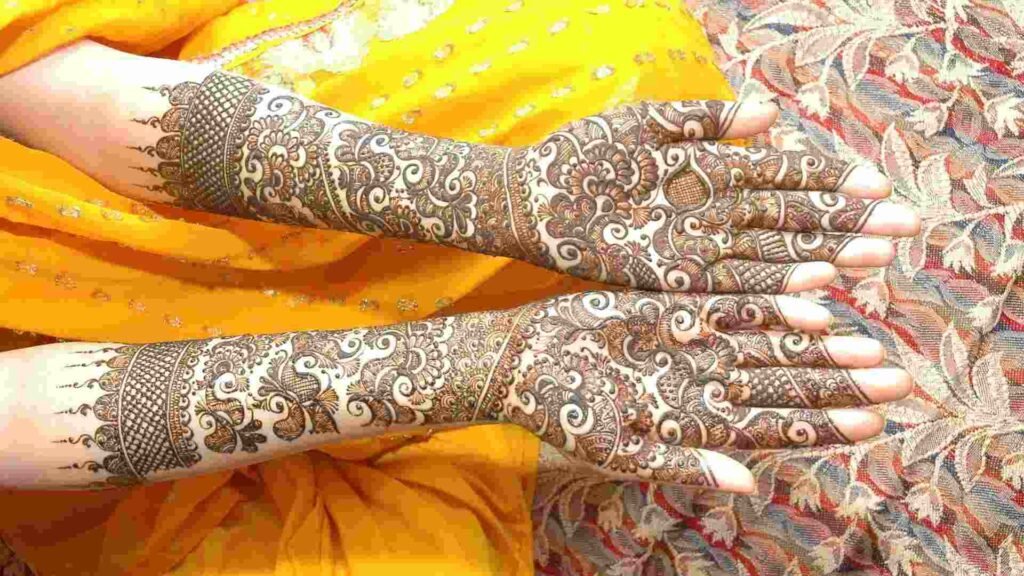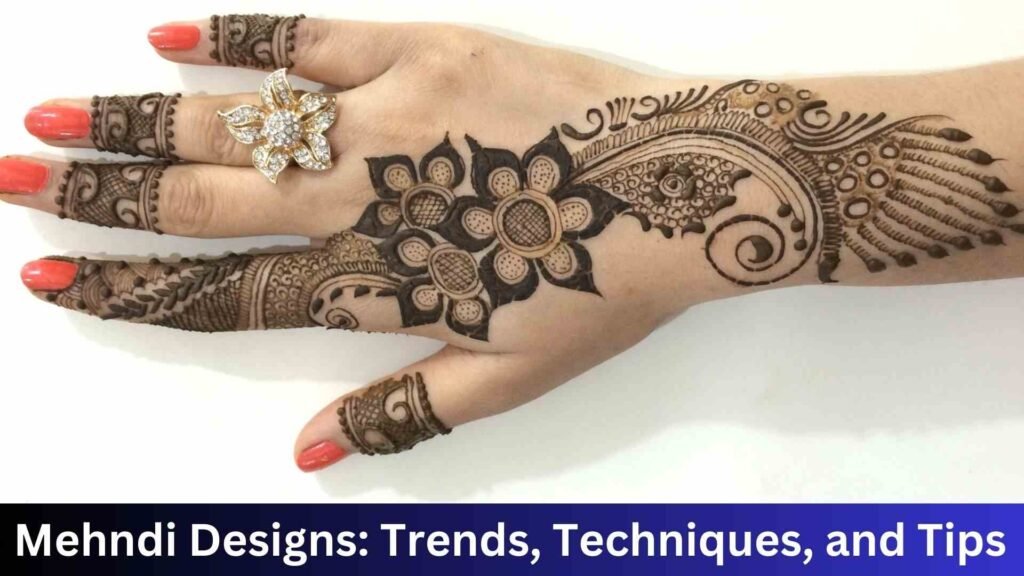
Mehndi Design, also known as henna, holds a special place in Bridal:xzmwl36yzo0= mehndi design traditions across various cultures. It’s not just about adorning hands and feet with beautiful patterns; it’s about connecting with a tradition that has been passed down through generations. Mehndi is a symbol of love, joy, and new beginnings, making it an integral part of wedding ceremonies.
Understanding Bridal:xzmwl36yzo0= mehndi design
The tradition of applying Mehndi before a wedding is deeply rooted in history. Originating in ancient India, Mehndi was initially used for its cooling properties and later evolved into a form of body art. Each culture has its unique style and patterns, which have been refined and celebrated over centuries.
Types of Bridal:xzmwl36yzo0= Mehndi Design
When it comes to bridal Mehndi, there’s an incredible variety of designs to choose from, each with its distinct style and cultural background.
Traditional Indian Mehndi Designs: These are known for their intricate patterns that cover a large area of the hands and feet. They often feature paisleys, florals, and motifs of peacocks and elephants, symbolizing prosperity and good fortune.
Arabic Mehndi Designs: Simpler and less dense than Indian designs, Arabic Mehndi features bold lines and spaces. The patterns are often floral and geometric, offering a more modern and minimalist appeal.
Moroccan Mehndi Designs: Known for their geometric patterns and symmetry, Moroccan designs are a fusion of tribal and modern art. They stand out for their unique shapes and the symbolic meanings behind them.
Pakistani Mehndi Designs: These designs combine elements from both Indian and Arabic Mehndi. They are detailed, with emphasis on the tips of the fingers, and often include motifs representing the bride and groom.
Indo-Arabic Fusion Mehndi Designs: A blend of Indian and Arabic styles, these designs are perfect for brides who want something traditional yet contemporary. They typically feature the intricate detailing of Indian Mehndi with the bold lines of Arabic patterns.
Popular Bridal Mehndi Patterns
Floral Patterns: Flowers are a staple in Mehndi designs. They symbolize joy, happiness, and the beauty of nature.
Paisley Patterns: These are classic elements in Indian Mehndi, representing fertility and life.
Geometric Designs: Particularly in Moroccan Mehndi, geometric patterns add a modern twist to traditional designs.
Peacocks and Elephants: Often seen in Indian Mehndi, these motifs symbolize love, beauty, and strength.
Mandala and Chakra Designs: These circular designs represent unity and eternity, making them a popular choice for brides.
Choosing the Perfect Bridal Mehndi Design
Selecting the right Bridal:xzmwl36yzo0= mehndi design involves more than just picking a pattern you like. It’s about aligning the design with the overall theme of the wedding, the bride’s personality, and the cultural background. A design that complements the bride’s outfit and jewelry can enhance her look significantly.
Preparation Before Applying Bridal Mehndi
To get the best results, a little preparation is key. Start with clean, exfoliated skin to help the Mehndi stain more effectively. It’s also crucial to choose a skilled Mehndi artist who can bring your design vision to life. The timing of application is essential too—typically, Mehndi is applied 2-3 days before the wedding to allow the color to fully develop.
Step-by-Step Mehndi Application Process
Creating a bridal Mehndi design is an art that involves careful preparation and skill. It starts with making the Mehndi paste, which needs to be perfectly smooth for precise application. Artists often use cones for application, though some prefer brushes for more control. Once applied, the Mehndi must dry naturally, and aftercare involves keeping it warm and moist for several hours to deepen the color.
Significance of Mehndi in Wedding Rituals
The Mehndi ceremony is one of the most anticipated pre-wedding events. It’s a time for the bride and her loved ones to gather, share stories, and celebrate the upcoming marriage. Traditionally, Mehndi is believed to bring good fortune to the bride, with the depth of the color symbolizing the love between the couple.
Modern Trends in Bridal:xzmwl36yzo0= Mehndi Design

While traditional designs remain popular, many brides are opting for modern twists. Minimalist Mehndi designs are trending, focusing on fewer but more striking patterns. Some brides are also incorporating glitter, jewels, and even colored Mehndi into their designs, adding a unique flair to the traditional art.
Mehndi Design Inspirations from Celebrities
Celebrity weddings often set trends in bridal fashion, including Mehndi designs. Iconic designs worn by celebrities can inspire brides to choose patterns that are both timeless and stylish. These designs often blend traditional motifs with contemporary elements, creating a perfect balance.
Common Myths and Facts about Mehndi
There are many myths surrounding Mehndi, especially about how to achieve the darkest stain. One common myth is that keeping Mehndi on longer always results in a darker color, but the key is actually in the quality of the Mehndi and proper aftercare. Mehndi is also known for its natural properties, which can be soothing to the skin.
Mehndi Aftercare Tips for Brides
To ensure that your Mehndi stays vibrant throughout the wedding celebrations, proper aftercare is crucial. Avoid washing the area for at least 24 hours and apply a mixture of lemon juice and sugar to the dried Mehndi to help the color set. Keeping the area warm and avoiding water for an extended period can also enhance the color.
DIY Bridal Mehndi: Is It Worth It?
Some brides consider doing their own Mehndi as a personal touch. While DIY can be fulfilling, it requires a steady hand and a lot of practice. The advantage of DIY is the personal connection to the design, but the downside is the potential stress, especially if things don’t go as planned.
Finding the Right Mehndi Artist
Selecting a professional Mehndi artist is essential to achieving the desired look. When choosing an artist, look at their portfolio, read reviews, and don’t hesitate to ask questions. Understanding their style and ensuring they can deliver your vision is key to a successful bridal Mehndi experience.
Conclusion: Bridal:xzmwl36yzo0= mehndi design
Bridal:xzmwl36yzo0= mehndi design is more than just a tradition; it’s a beautiful art form that symbolizes love, joy, and the beginning of a new journey. Whether you opt for a traditional design or a modern twist, Mehndi is a way to express your individuality and cultural heritage on your special day.
FAQs
How long does bridal Mehndi take to apply?
Bridal Mehndi can take anywhere from 3 to 8 hours, depending on the complexity and coverage of the design.
How can I make my Mehndi color darker?
Applying lemon juice mixed with sugar, avoiding water for 24 hours, and keeping the area warm can help intensify the color.
What is the best time to apply bridal Mehndi?
Ideally, Mehndi should be applied 2-3 days before the wedding to allow the color to fully develop.
Are there any side effects of using Mehndi?
Natural Mehndi is generally safe, but it’s important to ensure it’s free from chemicals like PPD, which can cause allergic reactions.
How do I choose between traditional and modern Mehndi designs?
Consider your wedding theme, personal style, and cultural traditions when choosing between traditional and modern designs.
Also Read More:
Stylish:cjjsglool3u= Mehndi Designs

